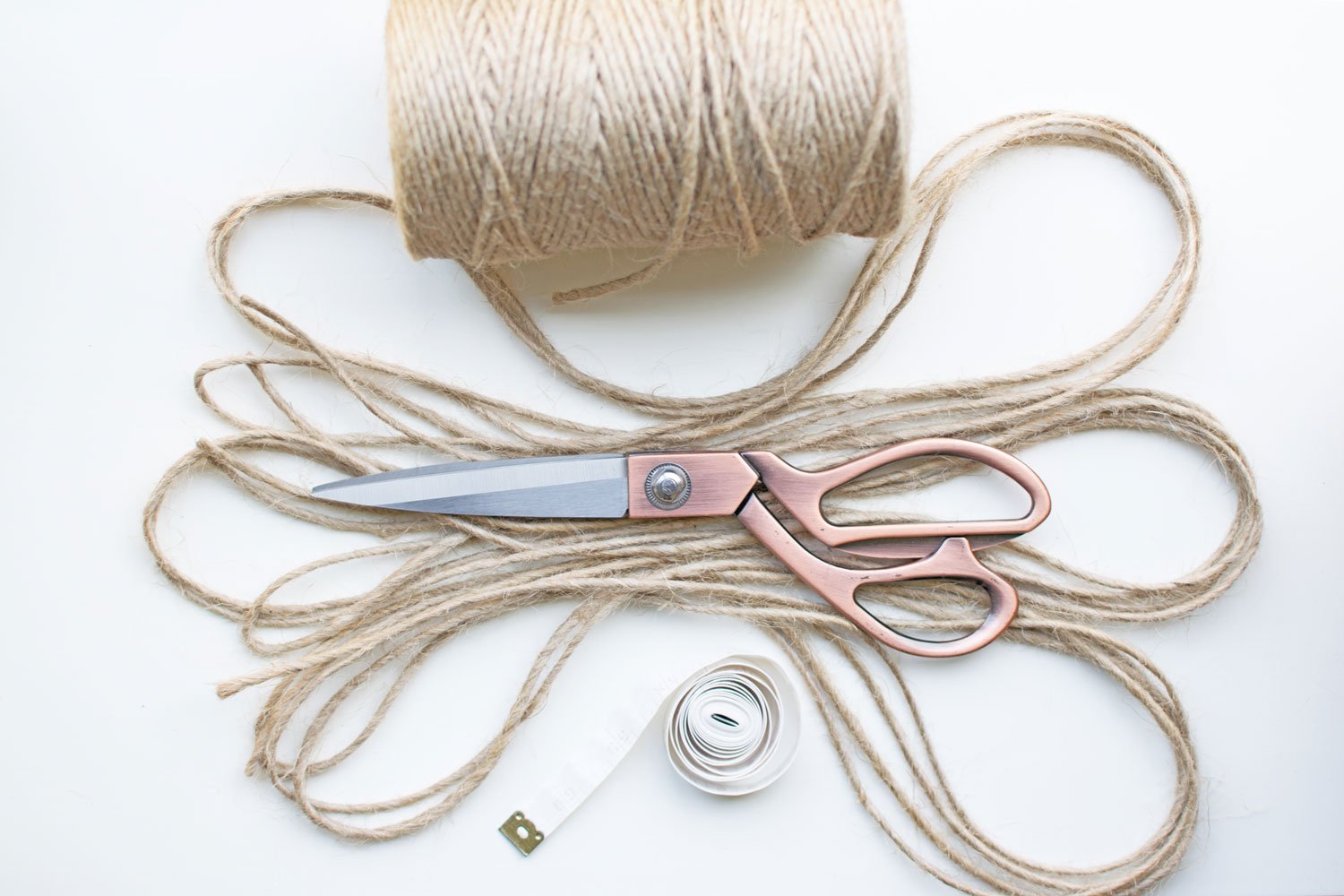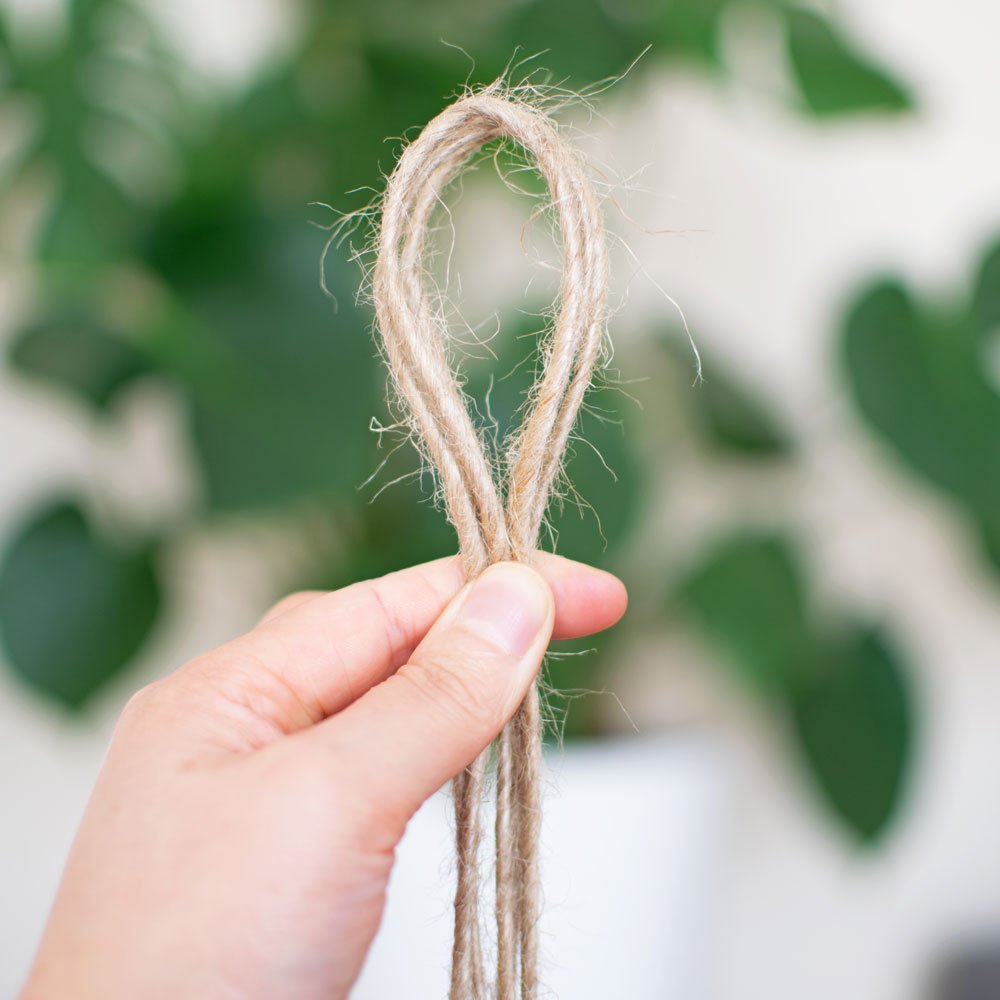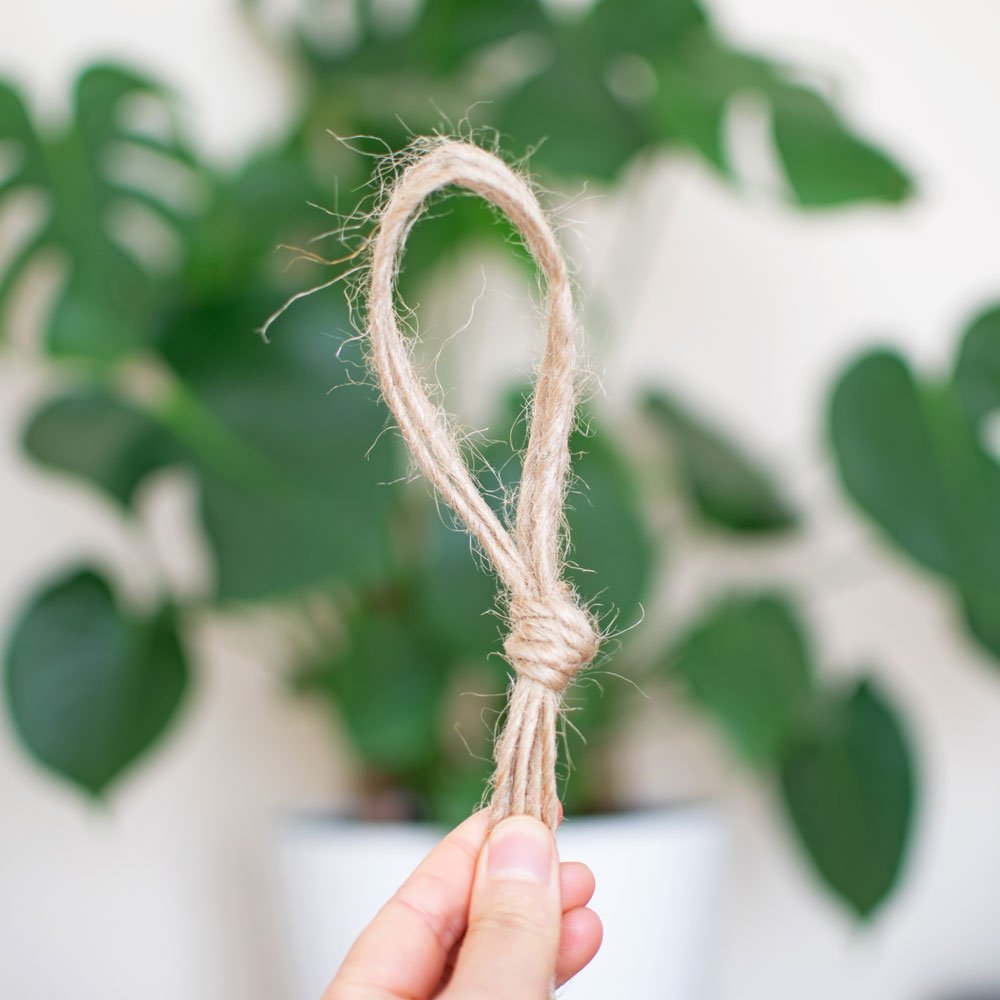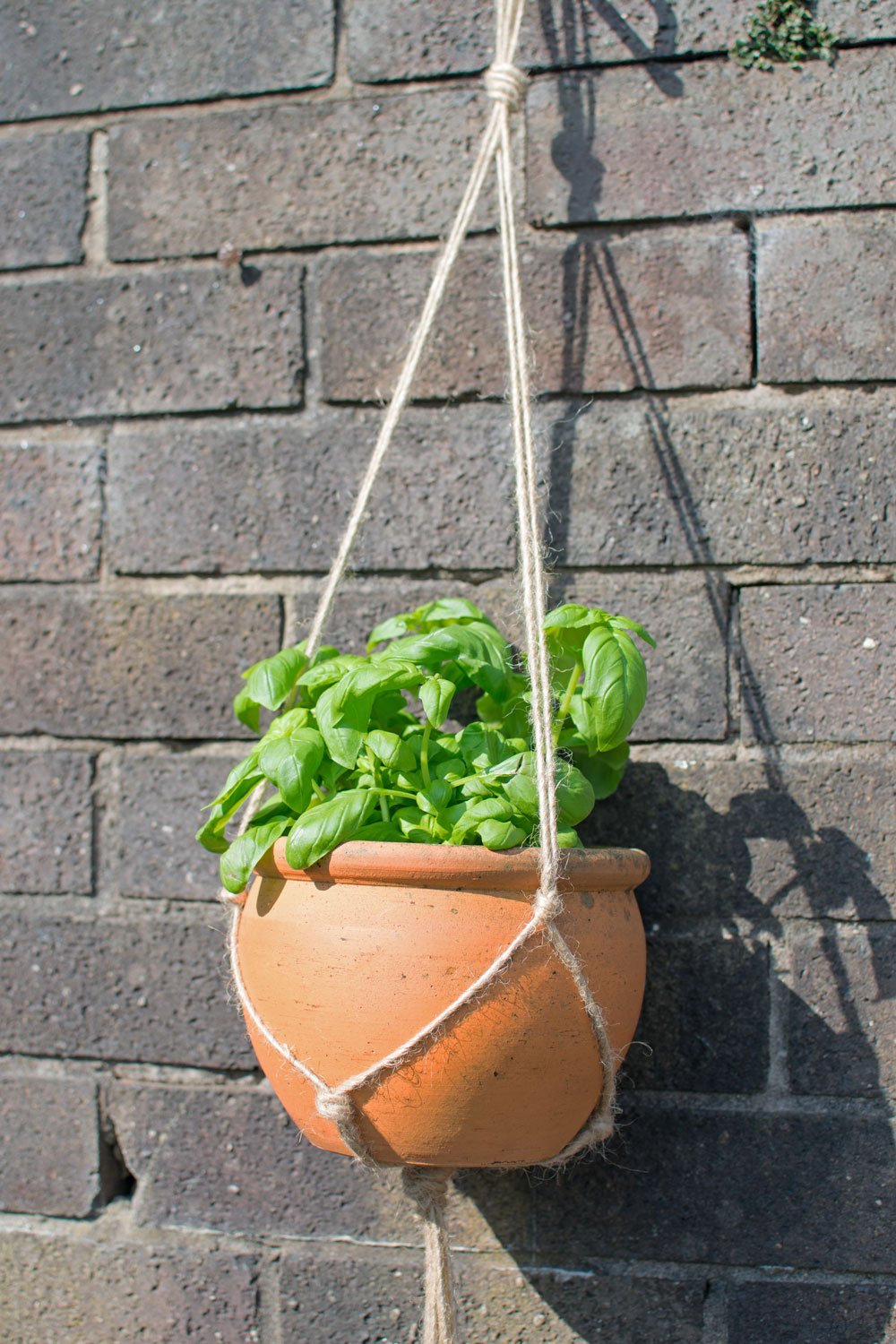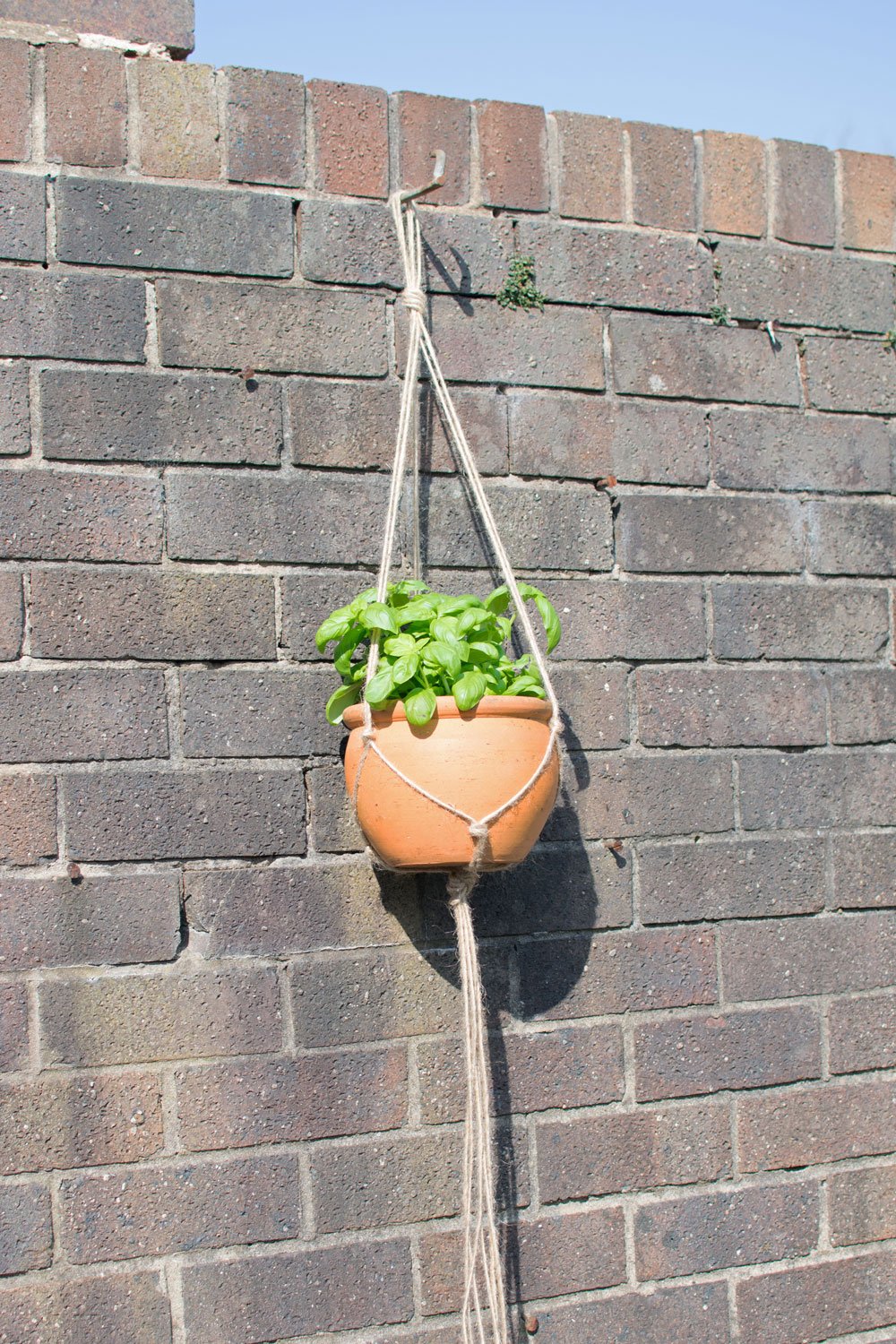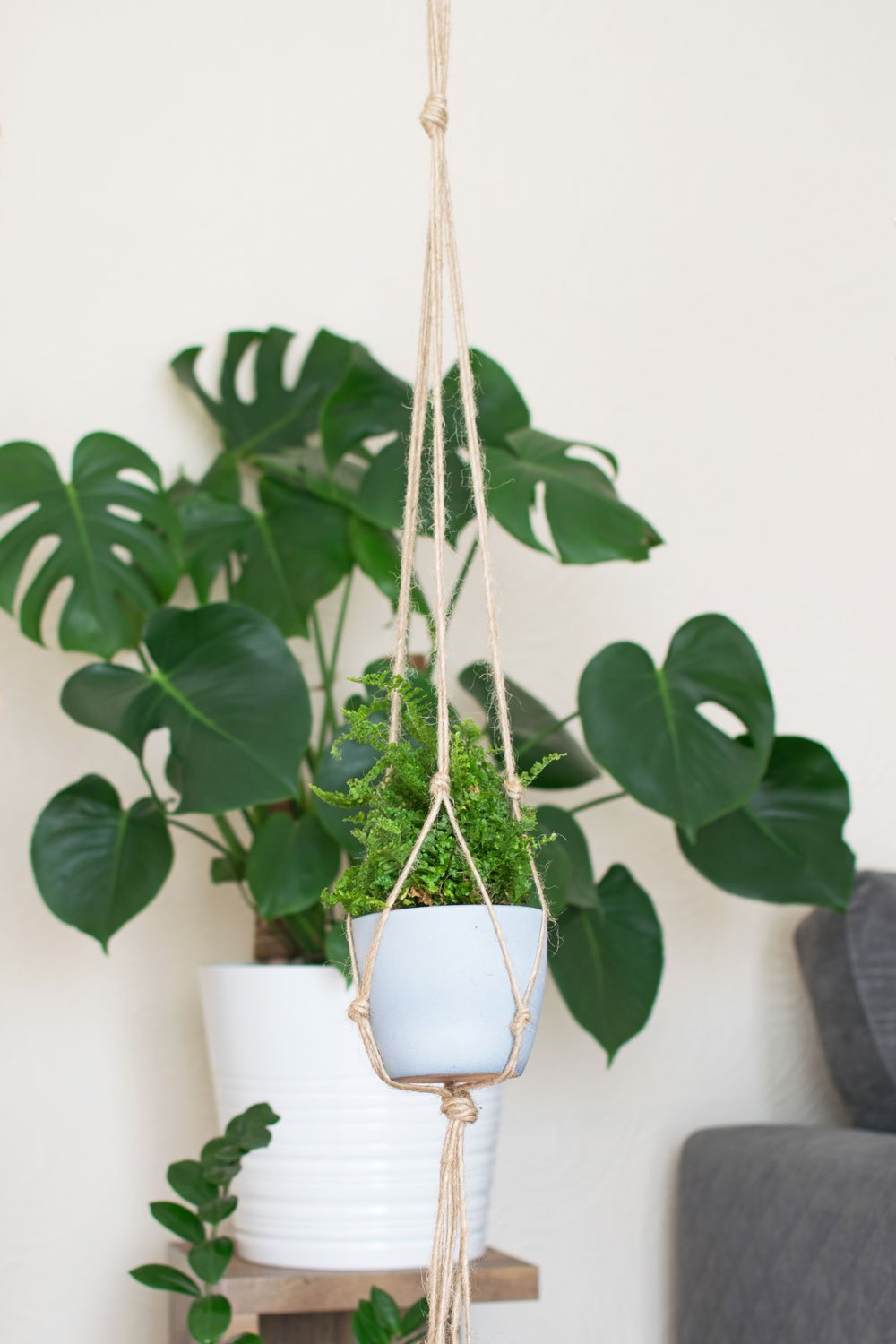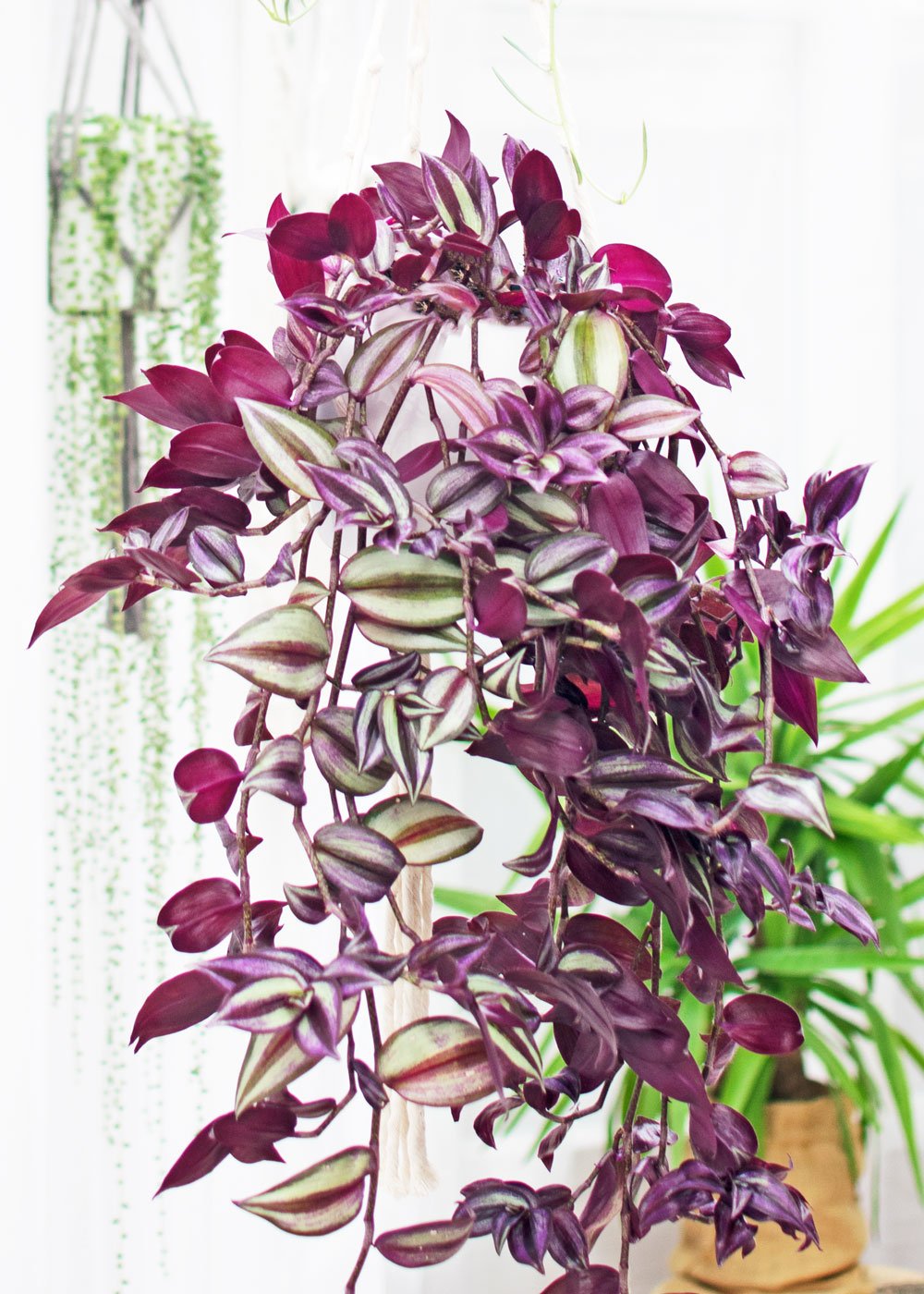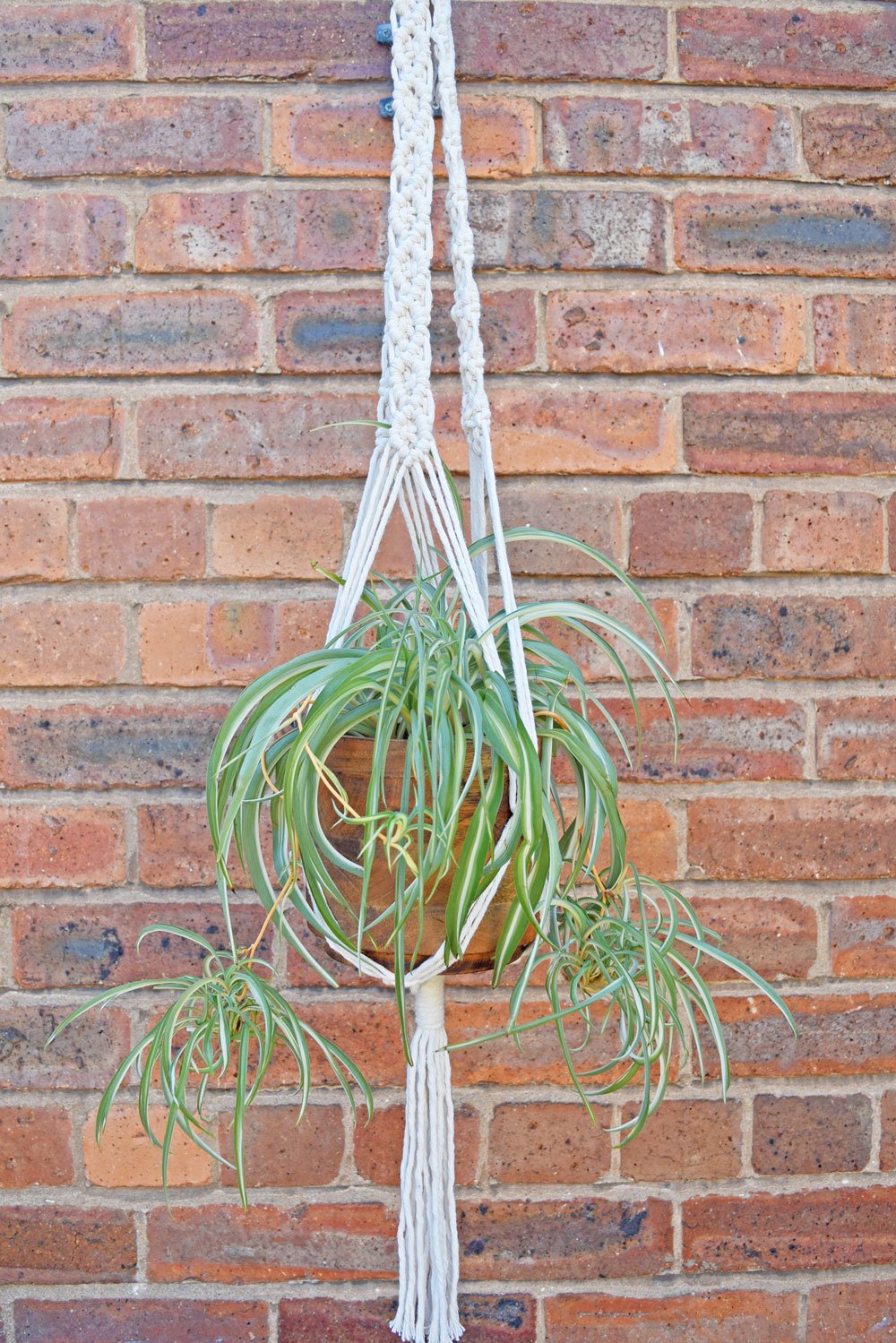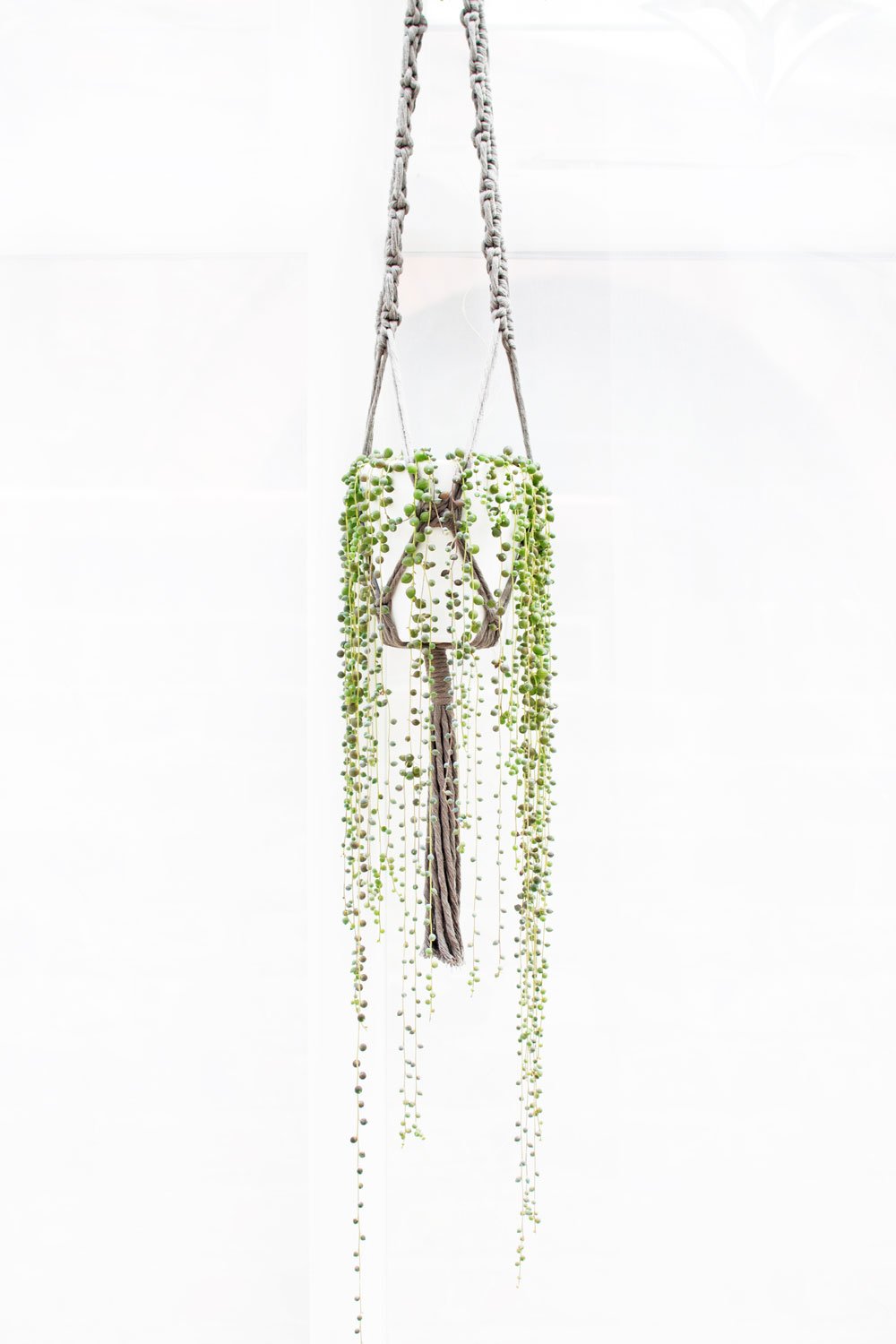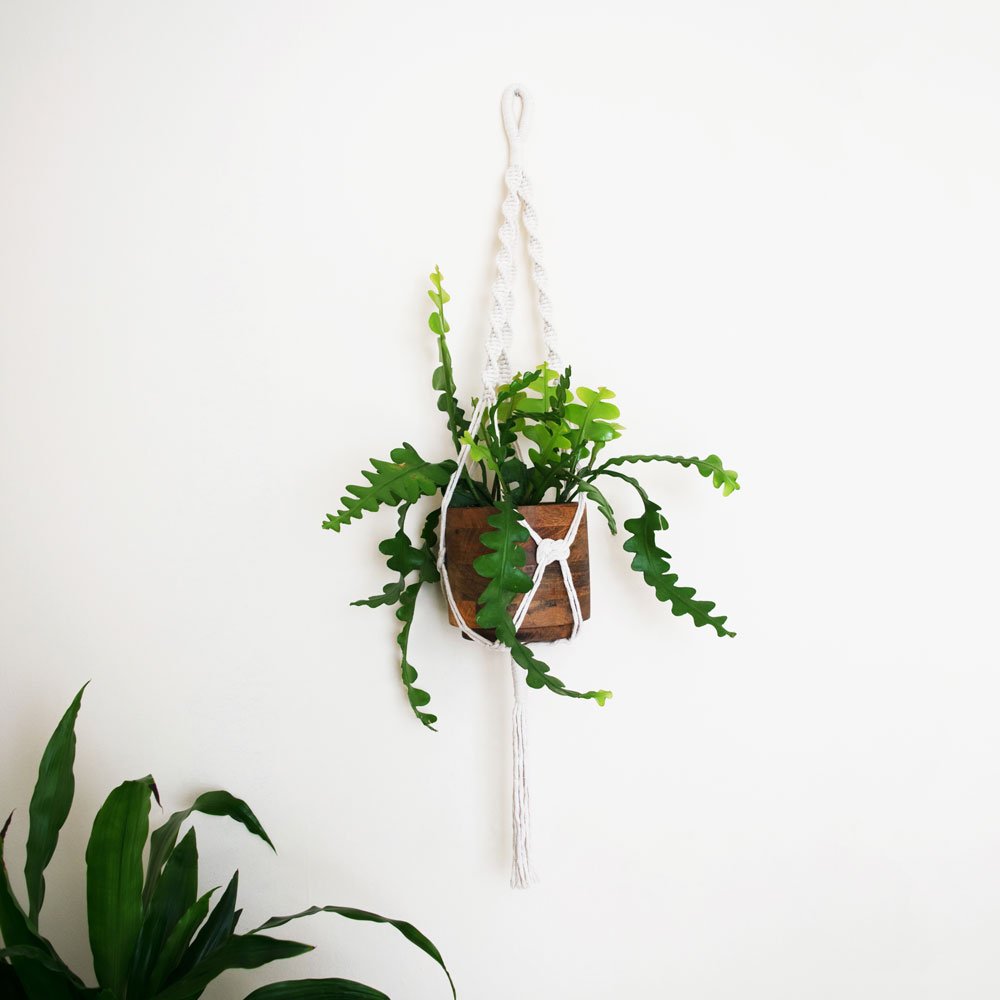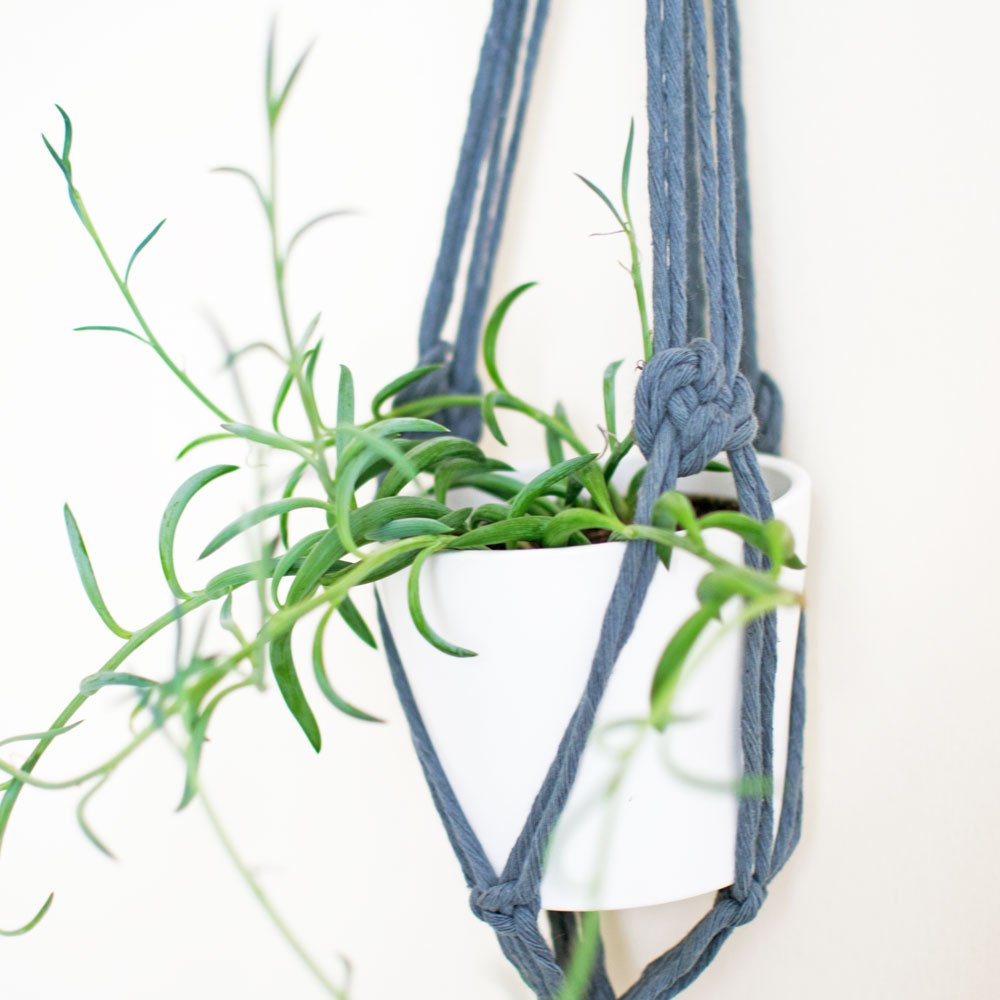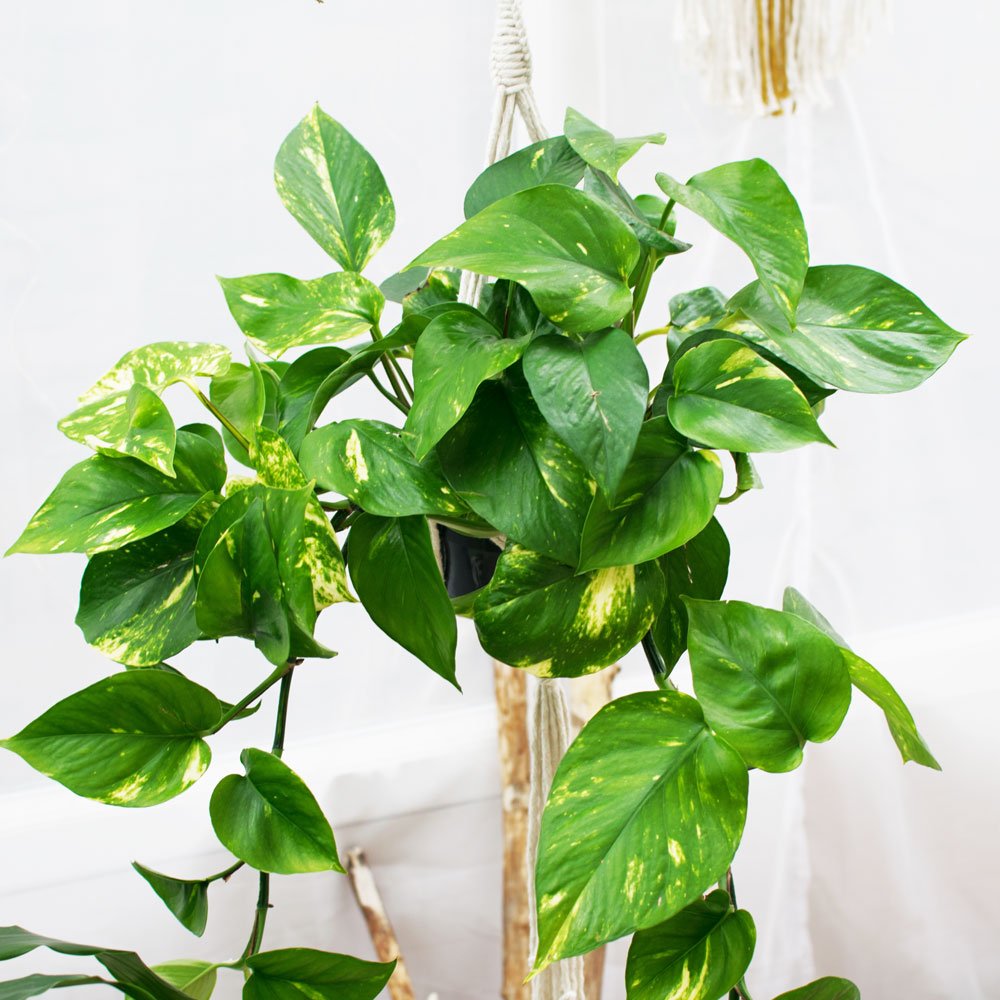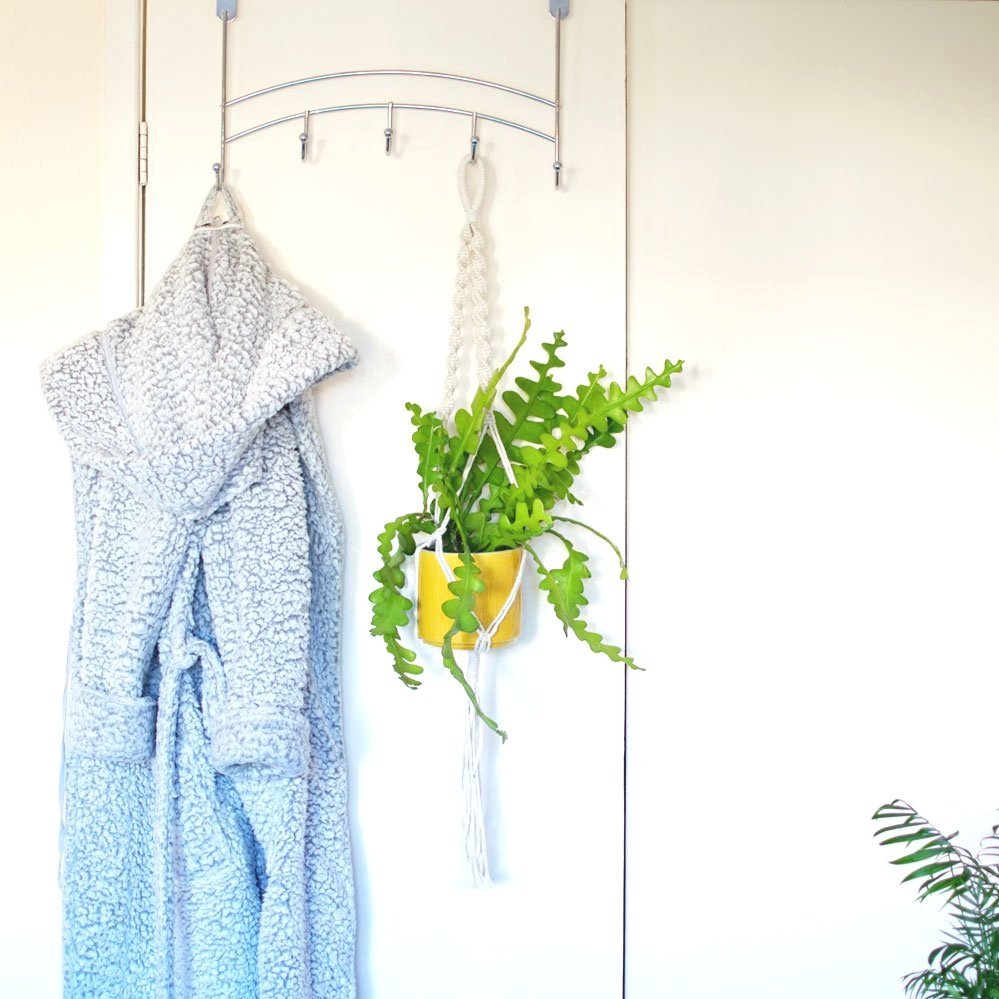How to Make a Rope Plant Hanger (in 5 Easy Steps).
You don’t need to be an expert knotter to be able to make this beautiful yet sturdy plant hanger.
Using only 8 knots (a knot you’ve done many times before) in total makes this the easiest and quickest plant hanger you’ll ever make. Plus, it’s made from jute twine which will allow you to use it both in the house and outside in your garden.
I’ve created many macrame plant hangers in the past and depending on the design they are very time consuming to make. These plant hangers also combine intricate knots to enhance the detail which can get quite tricky, especially if you are a beginner.
I decided to create this simple jute plant hanger tutorial for you to give this a go yourself.
So, let me take you through the 5 steps needed to make your very own plant hanger. But first things first… materials!
What do you need?
Jute Twine
I’ve used 3mm thick jute for this tutorial, but you can use whichever thickness you like. I’d recommend using thicker string for larger or heavier pots for strength and aesthetic purposes.
Your everyday string is usually available in 1mm thickness which is still perfectly fine to use for this tutorial if you don’t have any jute. This thickness will be more suited for smaller and lighter plants.
I’ve chosen jute as opposed to cotton as it’s an amazing fibre. It’s affordable, fast-drying and sustainable. This makes it perfect for using it indoors and outdoors. Of course you can still use cotton if you’d prefer.
Fabric Scissors
These types of scissors allow for cutting thick pieces of material with ease. However, you can use other scissors; they just won't be as sharp and will be slightly harder to get a neat cut. It’s still possible to cut the string, make sure to go slower and more carefully.
Top Tip: Use your everyday household scissors on some leftover pieces of foil. Cut the foil several times and this will sharpen your scissors.
Measuring Tape
Any form of tape measurer you’ve got stored away in drawers. Nothing special required for this material. If you don’t have one they’re easy to get in your local stores or online.
Step 1 - Measure and cut
Measure out and cut 3 x 3m lengths of jute twine, so you have 3 pieces of string that are all 3 metres in length.
Step 2 - Form the handle
Find the middle by folding all 3 lengths in half. Then hold it together using your fingers approximately 10cm down from the middle. It doesn’t have to be exactly 10cm give or take a few centimetres, it depends on how big you want the handle to be.
Using the rest of the string, tie an (overhand) knot so that it goes over your hand and through the loop (not the handle). Adjust accordingly so that the knot sits where your fingers used to be. See photos for reference.
Step 3 - Make the base
You will now have 6 lengths of string coming down from the handle. You can use the handle to hang it up whilst finishing off the rest of the hanger. I use S hooks to hang it from. If you don't have these, then any other fixture in your house can be used to make it easier for you. Door handles work just as well too.
Grab 2 lengths of string and tie the same knot approximately 40cm down from the handle knot. Repeat this step 2 more times using the rest of the string. You will now have 3 knots next to each other.
Step 4 - Tie 3 more knots
Repeat step 3 using the alternate string lengths to form the base of the plant hanger (see photo for reference). Tie the knot approximately 15cm down from the other 3 knots. Increase this length if you have a very large pot.
Step 5 - Finish off the base
Tie one last knot using all 6 string lengths (same as when you formed the handle). Tie it approximately 10cm down from the last 3 knots.
Test out the plant pot that you will be using and check to see if the position is all good. If you are happy that it fits all OK then you can now cut the tail to your desired length. You don’t have to do this step if you like the look of the long tail.
Et voilà! Well done on making your very own plant hanger.
What to hang in it
Absolutely anything you want. These hangers aren’t limited to plant pots, you can also use them to hang baskets as well. Or even pumpkins. Anything that is of a sturdy shape, but be mindful of the weight.
If you are sticking to plant pots for inside your house, then here are a few of my favourite indoor hanging houseplants:
From top left to bottom right: Tradescantia Zebrina, Spider Plant, String of Pearls, Fishbone Cactus, String of Bananas, Devil’s Ivy (Pothos).
You can find more information about these houseplants here.
I like to use herbs if I'm using the hanger outside in the garden. They’re also perfect for strawberries if you are wanting to get them off the ground and away from the slugs.
Get creative too with displaying them on all sorts of fixtures that are already available in your garden. Such as tree branches or wall/wooden fence fixtures. So there is no need to put in the extra effort for hanging up your pot.
They don’t necessarily have to be hanging plants that you can use. Flower pots that you have in the garden already will also work. The ones that don’t grow too tall, but remain bunched together still look stunning on display in a hanger.
Where to hang it:
Inside:
Aside from the ceiling hooks as these aren’t always possible to have in homes or can be too much of an effort to install. I like to display plant hangers on curtain rods and fixtures that are already present in the house. Perhaps you have a nail already in the wall that is not in use? Anything raised and is stable enough to handle a decent amount of weight will be fine.
You can also use over the door frame holders that you usually hang a dressing gown on. Or if you have a canopy bed use that to surround yourself with lots of them. Then enjoy waking up to the sight and feeling that you are in an indoor jungle.
Outside:
My favourite spot to hang them outside is on a pergola. This is because it can be a great opportunity to hang lots of them in the same place. Thus allowing you to create your own cosy outdoor space for relaxing in. Your guests will be very impressed!
They are also perfect for using on a balcony to really make that small space feel homely and inviting. As well as front porches or summer sheds. It's an ideal accessory for decorating a garden studio or an outdoor workspace.
Time to start making!
You've gathered your materials and you're ready to get cracking.
Now you know how to make a plant hanger, what to use with it and the best places to make the most out of it. You’ll be well on your way to creating a gorgeous living space filled with natural greenery. This will help you create a cosy and tranquil area - a place where you won't ever want to leave.
Have you tried this tutorial yet? How did it go?
If you’d prefer to save this tutorial for later and have easy access to it, you can download a FREE copy of it here.

